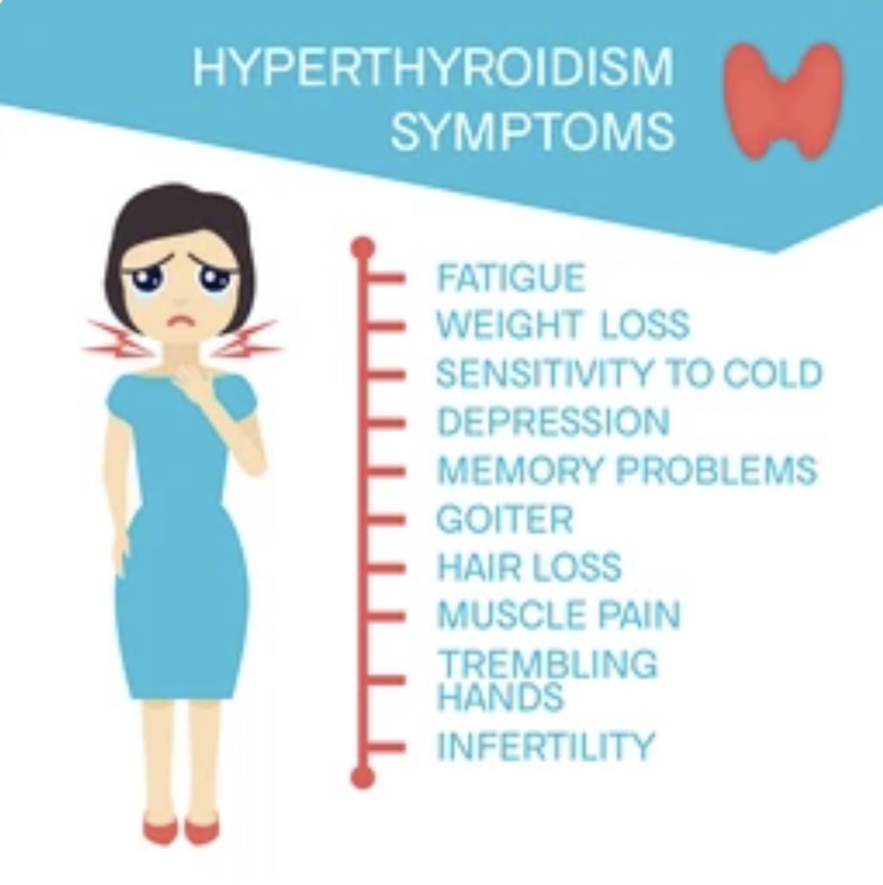Introduction
Hyperthyroidism is a medical condition that results from the overproduction of thyroid hormones by the thyroid gland (opposite of hypothyroidism). Thyroid hormones play a crucial role in regulating various bodily functions, making hyperthyroidism a significant concern in the field of zoology and endocrinology. In this article, we will explore the causes, symptoms, diagnosis, and treatment of hyperthyroidism, as well as its impact on the animal kingdom.
Understanding the Thyroid Gland

To comprehend hyperthyroidism, it is essential to understand the thyroid gland’s role and the hormones it produces. The thyroid gland is a small, butterfly-shaped organ located in the neck, just below the Adam’s apple. It is part of the endocrine system and produces two primary hormones: thyroxine (T4) and triiodothyronine (T3). These hormones are responsible for regulating the body’s metabolism, influencing how animals use energy, control body temperature, and maintain the balance of other hormones.
Causes of Hyperthyroidism
Hyperthyroidism occurs when the thyroid gland becomes overactive, producing an excess of thyroid hormones. The causes of hyperthyroidism can vary in both humans and animals, and it is essential to understand these factors to assess the prevalence and impact of the condition in the animal kingdom.
- Iodine Imbalance: A lack of iodine or excessive iodine intake can disrupt the thyroid’s normal hormone production. Iodine is an essential element for the synthesis of thyroid hormones, and its imbalance can lead to hyperthyroidism. This can occur in animals through dietary imbalances or exposure to iodine-rich environments.
- Thyroid Tumors: The most common cause of hyperthyroidism in both humans and animals is the presence of benign thyroid tumors called adenomas. These tumors can disrupt the normal regulation of thyroid hormone production, leading to excessive hormone release.
- Autoimmune Disorders: In some cases, animals, especially cats, can develop an autoimmune disorder known as feline hyperthyroidism. In this condition, the immune system produces antibodies that stimulate the thyroid gland to overproduce hormones.
- Iatrogenic: Iatrogenic hyperthyroidism occurs when animals are inadvertently exposed to excessive thyroid hormones. This can happen due to the administration of thyroid medications or inadvertent contamination of their food with thyroid hormones.
Symptoms of Hyperthyroidism

Hyperthyroidism can manifest a wide range of symptoms in animals, often reflecting the disruption of various bodily functions. Common symptoms include:
- Weight Loss: Animals with hyperthyroidism often experience unexplained weight loss despite increased appetite.
- Hyperactivity: Affected animals may become excessively active, restless, or exhibit aggressive behavior.
- Increased Heart Rate: An elevated heart rate, or tachycardia, is a common symptom, as thyroid hormones influence the cardiovascular system.
- Polydipsia and Polyuria: Increased thirst and urination can occur as a result of the condition.
- Vomiting and Diarrhea: Gastrointestinal disturbances are common, leading to vomiting and diarrhea.
- Hair and Skin Changes: Fur may become brittle, and skin changes like hair loss and thickening are often observed.
- Enlarged Thyroid Gland: In some cases, the thyroid gland may become enlarged and palpable.
- Muscle Weakness: Muscle weakness and a loss of muscle mass can be seen in animals with hyperthyroidism.
Diagnosis of Hyperthyroidism
The diagnosis of hyperthyroidism in animals often involves a combination of clinical evaluation and laboratory tests. Veterinarians will typically perform the following assessments:
- Physical Examination: A thorough physical examination may reveal an enlarged thyroid gland or other characteristic signs of hyperthyroidism.
- Blood Tests: Blood tests are crucial in measuring thyroid hormone levels, specifically T4 and T3. Elevated levels of these hormones in the bloodstream are indicative of hyperthyroidism.
- Thyroid Scintigraphy: This imaging technique can provide a visual assessment of the thyroid gland’s activity. It can help identify abnormalities and irregularities in thyroid function.
- Fine Needle Aspiration (FNA): FNA can be used to evaluate thyroid nodules or masses and differentiate between benign and malignant growths.
Treatment of Hyperthyroidism
Hyperthyroidism is a treatable condition in animals, and several options are available to manage the disease effectively. The choice of treatment may depend on the animal’s overall health, the severity of the condition, and the owner’s preferences. Common treatment methods include:
- Anti-Thyroid Medications: Medications such as methimazole or carbimazole can effectively reduce thyroid hormone production. These drugs are administered orally and may require regular monitoring.
- Surgical Thyroidectomy: Surgical removal of the affected thyroid gland(s) is another option. This procedure can be curative if performed successfully.
- Radioactive Iodine Therapy: Radioactive iodine therapy is considered the gold standard for treating hyperthyroidism in cats. It involves the administration of a radioactive isotope of iodine that selectively destroys overactive thyroid tissue while sparing healthy tissue.
- Dietary Management: In some cases, dietary management can help control hyperthyroidism. Specialized diets low in iodine or designed to support thyroid function may be recommended.
Impact on the Animal Kingdom
Hyperthyroidism is not exclusive to humans and can affect animals, especially domestic pets like cats and dogs. Feline hyperthyroidism is a well-documented condition that primarily affects older cats, and its prevalence has been on the rise. While the exact reasons for this increase are not fully understood, environmental factors and dietary elements may play a role.
The impact of hyperthyroidism on the animal kingdom extends beyond domestic pets. Wildlife and zoo animals can also be affected by this condition. The exposure to environmental contaminants, such as pollutants and endocrine-disrupting chemicals, has been suggested as a potential factor influencing thyroid health in various species.
Understanding the prevalence and consequences of hyperthyroidism in the animal kingdom is crucial for both wildlife conservation and the well-being of domestic animals. Research in this area helps identify potential causes, develop effective treatments, and establish preventive measures to mitigate the impact of this condition on various species.
Conclusion
Hyperthyroidism is a significant medical condition that affects animals as well as humans. Understanding its causes, symptoms, diagnosis, and treatment options is crucial for both veterinarians and pet owners. In the field of zoology, the study of hyperthyroidism in animals contributes to our knowledge of the impact of environmental factors on thyroid health and the health of various species. As research in this area continues, we can hope to improve the overall well-being of animals in our care and protect the thyroid health of wildlife in their natural habitats.
Discover more from ZOOLOGYTALKS
Subscribe to get the latest posts sent to your email.


